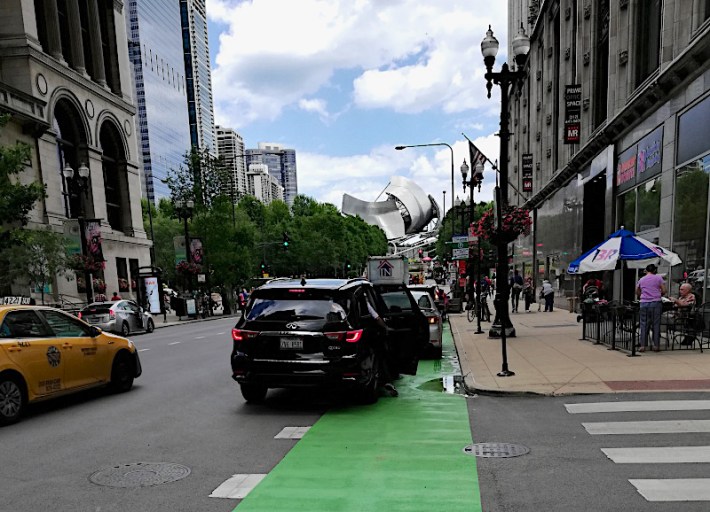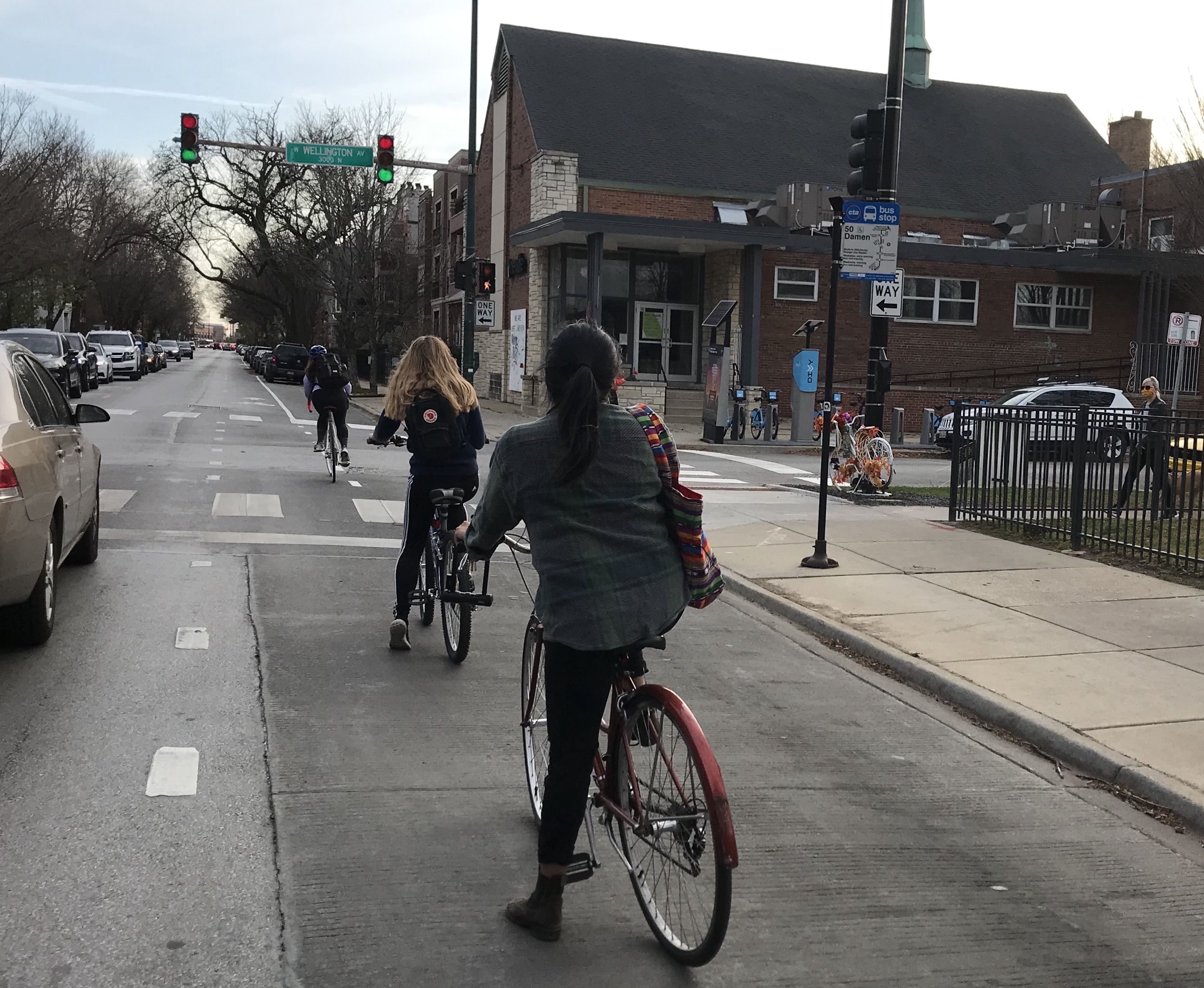In a recent blog post, the Active Transportation Alliance discussed the results of a People for Bikes global evaluation of city streets in terms of safety and comfort. Chicago scored in the bottom 10 percent of bike friendly cities. Out of one hundred possible points, Chicago scored 16 out of 100.
Chicago’s low score was largely due to the city's 30 mph default speed limit. According to research by the Federal Highway Administration, while people struck by drivers at 20 mph almost almost always survive, at 30 the survival rate drops to 50 percent.
Chicago’s low score was also due to a lack of low-stress bike routes. Chicago’s painted bike lanes doesn’t offer the safety or comfort for cyclists needed to significantly grow the number of Chicagoans using bikes for transportation or recreation. In addition to the lack of physical protection on most local bikeways, our city's bike lanes are poorly connected and don't form a cohesive network.
The People for Bikes rating system gave cities an overall rating based on combining two scores: a network score and a community score. The network scores rates cities on the quality and connectivity of their bicycle networks, which accounts for 80 percent of a city’s overall score. The network score looks at how easily someone can access everyday destinations such as groceries and retail, as well as hospitals, jobs, schools, and transit hubs via low-stress bicycle routes. Low-stress routes were defined as streets with speed limits of 25 mph or less, or busier streets with protected bike lanes or separated paths.
The community score uses an online survey to better understand ridership trends, awareness of local resources, and whether people feel biking is a safe and convenient option for them to get around. This score, while limited to those who take the survey, accounts for 20 percent of a city’s overall rating.
I was really curious about the community score, given that I had taken the People for Bikes community survey. You can view Chicago's profile written by People for Bikes on their website. Interestingly, Chicago residents gave our city relatively high marks for bikeway connectivity – Chicago received 66 points out 100. Chicagoans also gave the the a city high score in terms of ridership – 74 out of 100.
I can’t help feeling frustrated at the lack of data collection by the Chicago Department of Transportation. I’d love to see quarterly or annual reports on the amount of people cycling in the city, along with real efforts to listen to and substantively respond to the safety issues people biking are encountering on their rides. For a few years during former Mayor Rahm Emanuel’s first term, the transportation department published monthly counts of bicyclists at several fixed intersections.
Chicago’s community score in terms of safety was 47 out of 100. One could infer that those surveyed feel there's more to be done in terms of safe cycling infrastructure.

Streetsblog Chicago co-editor John Greenfield disagrees with the rationale that every street with a 30 mph speed limit is unsafe for biking because it unfairly lumps in Chicago's side streets into this classification, but I agree with Active Transportation Alliance's characterization, in the blog post, "to be sure, speed limits alone don’t deter speeding."
We know that motorists frequently drive above 30 mph. The 982,597 speeding tickets issued by Chicago's speed cameras this year through May 24 – which only issue tickets for going six miles per hour over or faster after the second violation – attest to that.
While the Mellow Chicago Bike Map that John created, which emphasizes routes on low-traffic side streets, is very useful, there are a number of streets on the map that could benefit from a lower speed limit (and less speeding in practice) via traffic calming. I've experienced and witnessed harassment from drivers while riding on Chicago's side streets. Incidents like this can scare "less confident" riders or even potential riders who witness these events.
I'll still continue to encourage new riders to ride on side streets while also recognizing the need for traffic calming and diversion. The much contested Dickens Greenway in Lincoln Park was seen as necessary given the wide width of the street and recognizing the high bike ridership that is already occurring.
The Active Transportation Alliance says the People for Bikes findings serve as a guide to where Chicago has room to improve as a bike-friendly city. ATA renewed its call for a city-wide network of protected bike lanes last month and urged folks to rally behind their efforts.
ATA is also considering pushing for a lowered speed limit in the 2022 Illinois state legislative session given that state law would need to be amended to achieve a lower speed limit. ATA rightly recognizes that a lowered speed limit alone will not be enough to reduce speeding; Chicago will need to invest in traffic calming such as bump-outs, chicanes, speed humps, traffic circles, and landscaping. I wrote about the need for traffic calming on residential streets last month.
Chicago’s low score on biking safety and comfort likely comes as no surprise for folks who regularly travel the city on two (or three) wheels. There’s plenty of room for improvement and a real need to create a cycling network that works for people of all ages and abilities.




